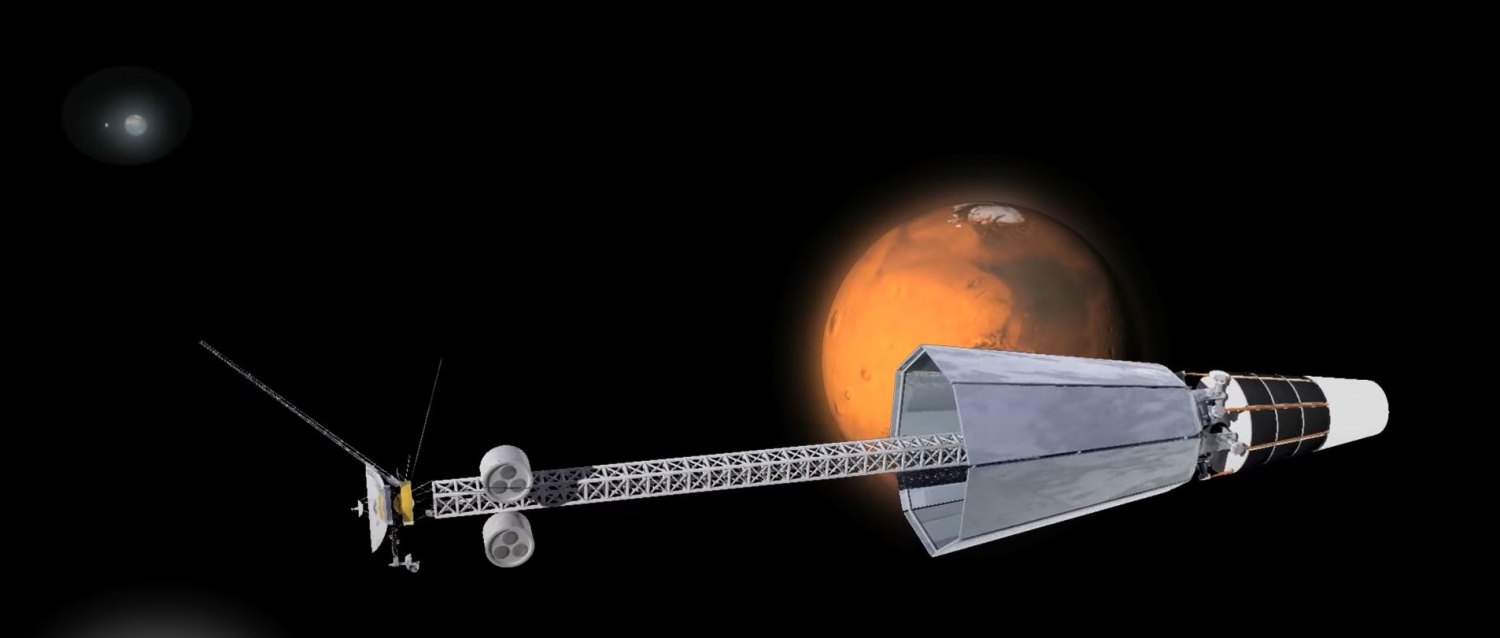Lockheed Martin has been awarded a $33.7 million grant from the Air Force Research Laboratory (AFRL) to accelerate its Joint Emergent Technology Supplying On-Orbit Nuclear (JETSON) High Power program. This initiative aims to advance high-power nuclear electric propulsion technologies for spacecraft design to meet the increasing demand for improved spacecraft mobility, situational awareness, and power generation.
The JETSON project, which is currently in the preliminary design review stage, is a collaboration between Lockheed Martin, Space Nuclear Power Corp (SpaceNukes), and BWX Technologies, Inc. (BWXT). Their partnership is a significant step forward in leveraging nuclear electric propulsion for ambitious space exploration missions destined for the Moon, Mars, and beyond.
Barry Miles, the program manager and principal investigator for JETSON at Lockheed Martin, highlighted the essential role of nuclear fission development in space applications, expressing a vision for transformative technologies that could redefine space exploration. He emphasized Lockheed Martin’s commitment to working with government agencies and industry partners to advance high-power electrical subsystems, electric propulsion, nuclear thermal propulsion, and fission surface power systems.
At the core of the JETSON program is a fission reactor designed to generate heat, which is then transferred to Stirling engines to produce electrical power within the range of 6 kWe to 20 kWe. This power capacity surpasses conventional solar arrays by a factor of four, giving a significant advantage for deep space exploration missions, especially in situations where continuous sunlight cannot be guaranteed.
Andy Phelps, CEO of SpaceNukes, underlined the significance of JETSON, citing its potential to enhance maneuverability and power capabilities, shaping future space force operations. He also emphasized that the United States has not deployed a reactor in space since 1965, making JETSON a groundbreaking leap in nuclear technology for both terrestrial and on-orbit applications.
The technology’s ability to deliver higher electrical output than traditional solar-powered spacecraft meets the growing demand for alternative power-generation methods. In scenarios where solar panels may be impractical, such as deep space missions or shadowed regions, nuclear electric-powered subsystems offer valuable power-generation capabilities.
The safety of the JETSON project is a priority, with particular attention given to the handling of uranium before the fission process begins. The reactor remains inert and inactive during launch, only initiating the fission process when the spacecraft is safely in a non-decaying orbit far from Earth.
The development work for the project will take place across various facilities in different locations. This includes Lockheed Martin’s facility near Denver, AFRL’s facility in Albuquerque, New Mexico, SpaceNukes’ facility at Los Alamos, New Mexico, and BWXT in Lynchburg, Virginia, with additional support from national labs, facilities, and suppliers in New Mexico.
In conclusion, Lockheed Martin’s JETSON program represents an important step forward in the development of advanced nuclear electric propulsion technologies for space exploration, with the potential to redefine the way we explore and utilize space.

I have over 10 years of experience in the cryptocurrency industry and I have been on the list of the top authors on LinkedIn for the past 5 years. I have a wealth of knowledge to share with my readers, and my goal is to help them navigate the ever-changing world of cryptocurrencies.







